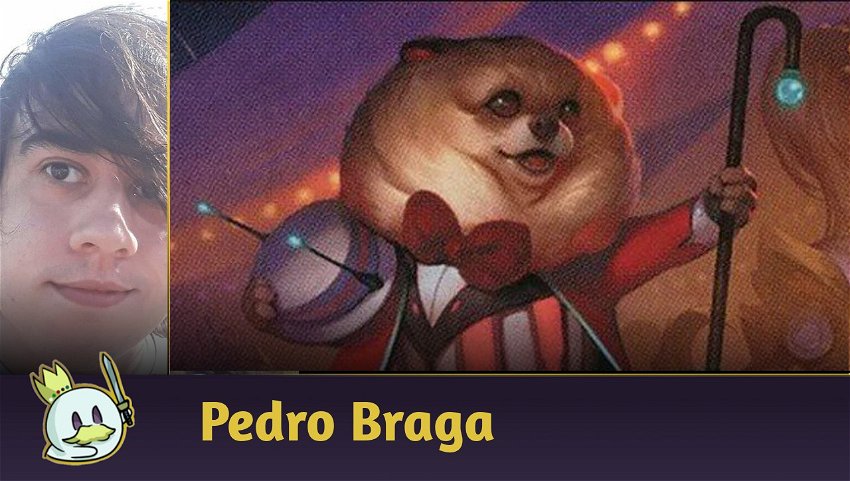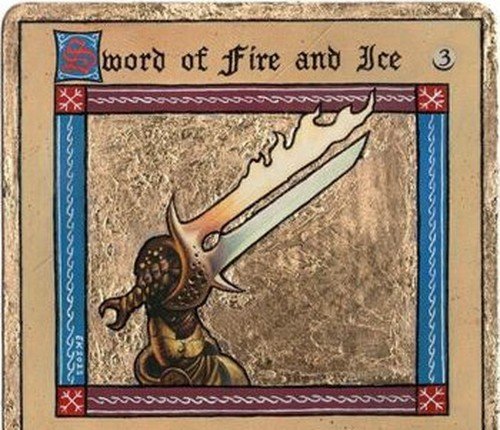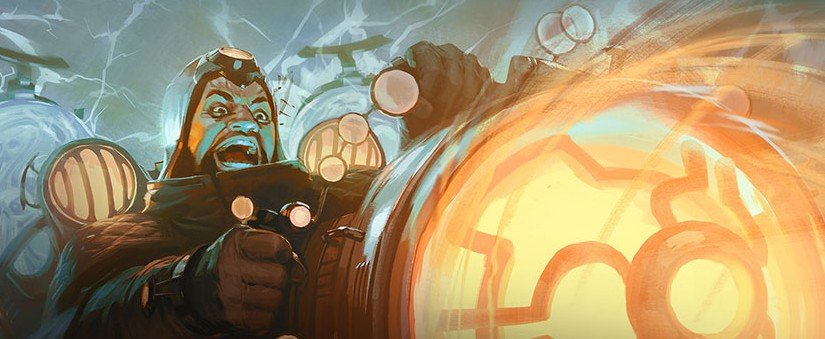Receiving new cards in Magic is always an unspeakable pleasure. Knowing new decks can emerge, and old decks can be improved, is part of the tasty epic that is the game. But even so, it is an evolution process which brings certain design pitfalls, cards too powerful for the game, like Oko, Thief of Crowns and Once Upon a Time, show that designs that are perhaps poorly planned can affect the health of the game, and turn everything upside down. And it also shows why Throne of Eldraine is my favorite expansion.
Although these are very extreme examples of poorly thought out design and how they affect the game, there are designs thought to increase the power level of the game and shake it up.
The most notable of these design phenomena is the so-called Power Creep. What does it do, how does it happen, what does it feed on? I'm sure everyone has asked each of these questions and more. Which will be answered in this article.
What is Power Creep?
Power Creep is a common phenomenon in card games and gacha that refers to the gradual introduction of more powerful cards or characters with stronger abilities, which unbalances the game and causes old characters or cards to lose value. This is often done as a marketing ploy to encourage players to buy new game pieces, but it can also lead to a sense of disadvantage for players with older collections.
There are two simple ways to install Power Creep. One is directly, with the introduction of parts that are improved versions of others. So, with a more neutral example, if you have in your game a fire warrior with 10 life that does 2 damage, and in the next expansion another fire warrior is released with 10 life, but that does 3 damage, we can say that this character suffered from such Power Creep, falling into disuse.
Or also indirectly, with the introduction of parts that leave other cards and characters insignificant. Imagine that in that same game they launch a water mage that decreases the attack of all fire element characters by 2, thus making your warrior no longer cause damage, and with the gradual popularization of the mage, any fire character that does less than three damage becomes obsolete.
Power Creep is much more common in Yu-Gi-Oh!, a game whose main format is equivalent to our Legacy. With the growing number of YGO expansions, cards need to behave more and more efficiently to justify buying new sets. As such, it's a rampant problem in a game that was once slow and focused on hitting monsters sequentially, today has become one of long combo rounds where it feels like the player is playing solitaire with their own deck, until one of them wins.
The phenomenon also happens in the Pokémon TCG, with new varieties of cards with little monsters dealing more and more damage and having more HP. Nowadays, a common Basic Pokémon like Charmander has almost as much HP as a stronger Pokémon like Mewtwo did in the old days. Fully evolved Pokémon that had around 120HP, nowadays are around 170HP, and let's not even talk about EX, GX, V, etc...
The Power Creep in Magic
In Magic, we can find both these types of Power Creep, in different forms. Unlike Yu-Gi-Oh!, the game fights Power Creep well thanks to the Standard format, which allows the power of the cards to be contained in a large block of expansions that have the most recent sets, with only the strongest cardboard of them having place in the eternal formats. But the phenomenon still exists in Magic.

A simple example of straight Power Creep is Savannah Lions. It used to be a powerful rare. Costing a single white mana, but possessing a 2/1 body, capable of ending the career of practically all Early Game monsters that got into a fight with it. These lions were a terror in the game in White Weenie strategies, since even without abilities, their body was enough to go over what was necessary.
Nowadays, how about we look at Dauntless Bodyguard? a 2/1 for a white mana, just like lions. But still, the bodyguard has the ability that allows him to be sacrificed to give indestructible to a more important creature, making it better than the lions in a vacuum.
At first, it might be a nice fit. Indeed, nowadays, a 2/1 without abilities doesn't have all the impact it used to, and putting some words on it can be useful to make the game more dynamic and...

So, we have a 2/1, one mana, which creates treasure, steals cards from the opponent's deck and even hides through the Dash ability. And there's even an article I've written just about him being the strongest red card ever printed. And this is where it all goes downhill.
Sets focused on releases for eternal formats, such as Yu-Gi-Oh!, are being known for running amok in these formats, changing all perceptions of the game and making them increasingly difficult to deal with. We even recently published an article about the effects that sets like Modern Horizons can bring to Modern, and how few decks can survive that.
Again, the intent behind the development of these cards is obvious. Create situations in which the purchase of new cardboard is encouraged, however, in an extremely aggressive way and that leads to obsolescence of entire decks.
Ragavan, Nimble Pilferer is a perfect example of everything that is wrong with Power Creep and how creative overkill when creating better and better cards can result in mistakes.
Other examples of Power Creep in Magic

An example that I really like to talk about is Liliana of the Veil, once one of the most powerful, played and expensive cards in Modern, today it is even safe to play in Standard.
The first sign of decline was with the release of Lurrus of the Dream-Den. In a world where one of the best cards in the format banned you from using permanents more expensive than two mana, Liliana of the Veil was sent home since it cost three.
A long time later, now with the panther banned from Modern, Liliana was able to return to the game, but now facing problems created in Modern Horizons 2, which left her completely in check and out of date. Nowadays, there are some who still run her, but its price and recurrence of use have gone down the drain.

In another Modern anecdote, we have Tarmogoyf, another card that once cost a lot of money and was one of the main beaters of the format, nowadays, it has fallen well in terms of use and price. The reason? Fatal Push, a one-mana spell capable of eliminating the Goyf, regardless of its power or toughness.
Thus, a single card totally diminished the relevance of Goyf, a card even problematic in some matches and a great source of power for green in the format.
Horizontal Design x Vertical Design

Unfortunately, we have no way to go into the Wizards' office, restructure their plans for the next few years, and tweak everything to shape the landscape however we want. But still, the means of how to solve this is up for debate.
A really cool way to improve the game is to practice the so-called “Horizontal Design”, that is, with the possibilities of the game expanding sideways, going after new ideas and approaches, new and different effects. The opposite of this would be the “Vertical Design”, from which Power Creep draws, which is about adding novelties and new skills to existing designs, making them better and better.
With a more horizontal design, it is possible to bring new things to the table without relying on ever-lower mana costs and massively good abilities, and start exploring the limits of the game in a broader and more organic way. Instead of fortifying old decks with only cards that deal more damage and generate more resources for the same mana, it is possible to use this tool to generate new strategies and a more diverse format, without having to weaken cards or create formats with less attrition, too.
Conclusion
Finally, I think it's believable that the real Modern Masters 3 is the Lord of the Rings set that will come later this year, as it's being designed for the format.
Many fans of the franchise have their eyes on the product, and Wizards can add even more market value to it by putting powerful cards capable of vaporizing Ragavan with just a glare. We should all hope the format doesn't go through another crisis.














— Comentarios 0
, Reacciones 1
Se el primero en comentar